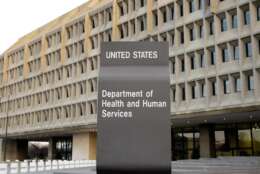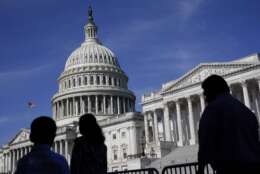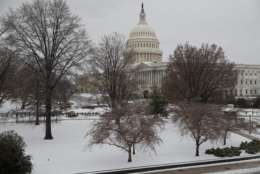Management
-
Jennifer Wendell, the Department of Health and Human Services deputy CIO, will serve as acting CIO until a permanent one is hired.
November 14, 2023 -
It will be this new congressional leadership's first test to try and avoid a government shutdown. As usual, the ones who will be doing most of the watching will be federal contractors. There is a new initiative from the White House though, that will give them plenty to keep busy while the waiting game ensues. To get a pulse check on the contracting industry, Federal Drive Executive Producer Eric White talked with David Berteau, President and CEO of the Professional Services Council.
November 14, 2023 -
The Postal Service, citing higher costs beyond its control, is falling behind on plans to reach long-term financial stability.
November 14, 2023 -
Anyone working in the last few years has likely encountered the DEI movement: diversity, equity and inclusion. The Biden administration expanded that by adding an "A" for accessibility.
November 14, 2023 -
Among the recent inductees to the National Academy of Public Administration, is a former state budget official. For how the federal government looks from a state point of view, Federal Drive Host Tom Temin spoke with that official, Shelby Kerns, who is now the Executive Director of the National Association of State Budget Officers.
November 13, 2023 -
It sure came fast. Just a workweek remaining until the continuing resolution expires. The fever is building on Capitol Hill to do something to avoid a government shutdown. For the latest, Federal Drive Host Tom Temin spoke to Bloomberg Government Deputy News Director Loren Duggan.
November 13, 2023 -
For half a century, the Small Business Administration’s 8(a) program has stepped in. It has provided tools for small firms entering the federal marketplace and the resources necessary to assist small business owners in building and scaling their companies to compete in both the public and private sectors.
November 13, 2023 -
In today's Federal Newscast: GSA is setting up a new contract to help agencies mitigate their supply chain risks. Congressional leaders want an update on how agencies are using AI tools. And as you brace for a government shutdown, how about a snow day?
November 13, 2023 -
House Speaker Mike Johnson has unveiled his proposal to avoid a partial government shutdown next weekend by extending government funding for some agencies and programs until Jan. 19 and continuing funding for others until Feb. 2.
November 11, 2023 -
The new office aims to bring more transparency and evidence-based decision-making to DHS, but it will require the buy-in of the department’s many components.
November 10, 2023 -
Just because GSA has chosen a site for a new FBI building, doesn't mean anyone should be picking out carpets and drapes just yet.
November 09, 2023 -
It's a program with a long name: Community Development Block Grant Disaster Recovery and Mitigation. It entails a lot of money from Housing and Urban Development grants: $82 billion over 10 years. But the HUD office of inspector general has found some oversight challenges in preventing duplication of benefits. For Details, Federal Drive Host Tom Temin spoke In Studio with Deputy IG Stephen Begg.
November 09, 2023 -
A decade-long disagreement over where to build a new headquarters for the FBI is now settled. Federal officials confirmed Wednesday night that the General Services Administration has selected Greenbelt as the future home of the FBI headquarters.
November 08, 2023 -
In a new competency model, OPM listed 33 specific skills that it said are important for program evaluation work.
November 08, 2023 -
Contractors brought protests to the Government Accountability Office (GAO) more than 2,000 times last year, up more than 20% from fiscal 2022. GAO sustained them at more than twice the rate of the year earlier, siding with contractors in about a third of the cases.
November 08, 2023















